Think of the most disgusting thing you’ve ever eaten and it won’t compare to what Willem Dafoe is forced to consume in the newish film Inside when he’s imprisoned inside a stranger’s tasteful architectural marvel of an apartment. Being trapped extends beyond the physical realm, so in this issue I present a small selection of movies that circle characters who are trapped—mentally, socially, or physically—and what these stories reveal about our society at large.
i. short takes - things I wrote
ii. buried / little woods / sanctuary / dogville
iii. WATCH inside
iv. EAT Cafe Mars
THE MOTHER AND THE WHORE is a teeth-gnashing portrait of anomie centered around a sensitive dirtbag, both trollish and tender; MY LITTLE LOVES is a searing and compassionate coming of age story that holds something of the key to both of these deeply personal quasi-autobiographical works. (my primer to Jean Eustache)
Christian Petzold’s AFIRE is an off-brand ~summer film~ in the vein of Rohmer that spotlights a struggling novelist’s performative labor as well as the horrors of vacationing with said writer. (my review for LitHub)
Shot in a lurid neon Safdie-bros palette, RETURN TO SEOUL is an unconventional adoptee-narrative and singular character portrait that’s as irrepressible as its heroine. (my interview with director Davy Chou)
Unrelated: For Eater NY I wrote about the arrival of Lebanese crunch wraps and hot cheeto burritos in Brooklyn, at FATIMA’S GRILL.
BURIED
Rodrigo Cortez, 2010
It always takes an outsider to make the grim but true parallels: our final days will be spent on hold, passed back and forth between faceless pencil pushers, left to die with no fanfare or dignity, at the hand of unaccomodating institutions as useless as devices dented with dying batteries.
LITTLE WOODS
Nia DaCosta, 2018
Before directing the Candyman sequel, Nia DaCosta made more plain the unforgiving horror that is the U.S. healthcare system in this woman-powered neo-western and antidote to the Trumpist Hell or Highwater. As depicted by DaCosta, life on the margins is correctly grim, often harrowing, and never does it mutate into poverty porn. “Your choices are only as good as your options.”
DOGVILLE
Lars von Trier, 2003
A seductive cocktail of crushing cynicism, Dogville plays like Au Hasard Balthazar and the Stanford prison experiment mixed with the tunes of John Wesley Harding. Excerpted from my writeup for Screen Slate.
When I first watched this scorchingly poignant parable of American ideals and value more than decade ago at the height of my depression I found it an unexpected balm. I was so floored in fact, that I rewatched it immediately, which is saying something since the movie is some two and a half hours long. This was back when Netflix sent DVDs in the mail so there were thankfully no 15 second previews for 30-minute garbage impeding upon my emotional shock or the rapturous dissonance of end credits set to David Bowie, Von Trier’s final micdrop.
Dogville is currently streaming on Mubi, you can get a 30-day trial with my code.
SANCTUARY
Zachary Wigon, 2023
A hotel penthouse suite becomes the volatile site of 24-hour employee-employer negotiations, and sharply swerving gender-fueled power plays when a Christopher Abbott’s hotel-chain softboy tries to fire Margaret Qualley’s dominatrix with a parting Audemars Pigeut, essentially a retirement gift that she swiftly chucks in a vase of water. Ultimately less grounding breaking than it is appetite whetting, less subversive than it is, as Margaret Qualley’s says, “a whole lot of fun.” Her performance, careening from coquettish to exactingly vulnerable to fiercely savage. truly dominates, putting Abbott, and the rest of us, completely at her mercy.
INSIDE
Vasilis Katsoupis, 2023
After triggering the burglar alarm, Nemo, an art thief (Willem Dafoe) is sealed tightly inside a grossly spacious Manhattan penthouse brimming with priceless paintings but treacherously low on sustenance. Marizio Cattelan photographs and Egon Schiele paintings grace the walls but the fridge holds precious little beyond a handful of fancy moldering condiments: aubergine chutney, truffle sauce, non-Heinz ketchup. To make matters worse, the water has stopped running and the thermostat is on the fritz.
Inside begins as a tale of American ingenuity a la The Martian, but evolves into an ambiguous critique on the art world and an uncertain allegory about heaven and hell ruled by a an architect/designer god. If you own a pair of priceless paintings and no one lives to see them, do they really exist? What good is the enjoyment of art for the rich few?
To survive this lavish prison requires its own artistry. Nemo becomes an unwitting purveyor of the deconstructionist arts dismantling furniture and skillfully reconstructing it into a climbable sculpture to reach a skylight in hopes of escape. He becomes a performance artist, too, drawing on intuitive culinary skills to concoct meals from a meager but disparate collection of items, and ultimately pushing himself to eat the repulsive creations. The pantry—prohibitively camouflaged, as is the wont of the rich—secures a bounty of boxed pasta, dog food (a distressing Chekhov's gun), and a glorious shank of beef twirling around a small dry-aging cabinet—a costly extravagance rendered entirely pointless. The pasta is soaked overnight, which I leanred from
Inside is rigorous in its efforts to seduce and repel, often at once. There is an irony to how the food is photographed in the film, a discrepancy between the cool austere glamor of the cinematography and the stark grossness of that which he must consume, abject forms of nutrition at odds with the principally elegant dungeon that surrounds him. In the most hurl-worthy scene he obliterates a tropical fish with the side of a knife, rolling it into flour to make “meatballs.”

Most of these meals are half-obscured in darkness; the camera does not savor them, though it does linger on and emphasize Nemo’s thirst. The feeling of being parched has never been so well-conveyed as it is here with Dafoe licking beads of condensation inside of a freezer or later lapping spray from the indoor sprinkler.
Of course, the luxury digs can sustain plant-life, including a full-blown tree, but not humans. Nemo gathers water by the bowl and painstakingly spoons it into a bottle, allowing space-saving in the fridge, but it also has the added function of easing his mind as the ritual helps to establish order, retain a sense of dignity, and stave off the onset of madness, at least temporarily. (It’s not long before he’s tracing somber halos and menacing clouds of darkness onto the walls.)
Rituals are why the ceremony of dining at a properly set table can feel so remarkably adult, and, why after eight hours drinking from what is an effectively a comically oversized sippy cup for adults, I switch to the most delicate glass I can find once the workday concludes to mark the the distinction of the hours.
I’m not sure whether to read this film as a screed on the art world or the capitalist forces behind it, or perhaps vague commentary on the unholy confluence of the two—but that would be far too generous of a reading, and one that goes against the more character-driven nature of the film. Due to the scarcity of information about Nemo, his scant voiceovers become all the more significant to interpreting the story. An anecdote detailing his devotion to art (prized above cherished pets, family members, and high-energy riffs of AC/DC) open and close the film, implying a more personal rebuke from the director. Man cannot live on art alone.
CAFE MARS
Gowanus, Brooklyn
Every meal at Cafe Mars begins with a complimentary glass of wine. Before the bartender poured us some prosecco col fondo, the kind of bubbly with the floaty bits mixed in, we were presented three uniquely discrete drinking vessels and asked to choose the one that spoke to us most (I ended up with a squat, green chalice). This diverting and unexpected prelude to our meal was a relevant indication of the experience to come. Opened by chefs and restaurant professionals who’ve clocked time at wd-50, aska, Estela, and Ma Peche, Cafe Mars bills itself as an “unusual italian restaurant” which is also to say it is a wholly American one—where else would you find both ranch and Bulldog sauce on the menu? Inventive and distinct, the food at Cafe Mars doesn’t always gel but poses nonetheless a refreshing bit of risk-taking in a town where every menu is starting to look the same. The decor, rooted in the riotous Memphis 70s, stands in contrast to the subdued clientele of Brooklynites, and the restaurant’s sensibility—cheeky, mellow, a touch bizarre—is rather artfully embodied by the bathroom, where Mitch Hedberg’s voice lilts into nonsequiturs.
Green olives suspended in negroni jello are an ingenious treat, refreshingly bitter, citrusy, and well—negroni-like. The trembling squares hearken back to 1950s aspic in form and more contemporary jello-shots in spirit. Elusive and wriggling, they’d make the perfect hors d'oeuvres served in shot glasses.
A coil of octopus dressed with ranch, roni cups, and celery dropping on the edge of freshness, was flavorfully composed, but the octopus itself was a touch too tough, more toothsome than I preferred.
The oblong lamb meatballs spiced with berbere, on the other hand were more tender and yielding. Served on a bed of white beans, creamy but firm, this dish made up for in execution what it lacked in creativity. This was often the case with most things I tasted at Cafe Mars: the mores straightforward dishes prove to the the tastiest, though sometimes only by a margin.
The baked-potato gnocchi, streaked with garlic, and drizzled with sour cream and bacon, proved a nostalgic re-composition to the humble dish diminished only by the oily heads of broccoli. It was the girelle, pinwheels of sunflower, doused as the menu declares with “lemon lemon lemon” that I’d return to.
My skepticism of the pork rib parmesan proved accurate. The rack of ribs are subjected to a variety of cooking techniques and temperatures (broiled, cold smoked, roasted, and a few things in between) rendering the meat tough, and there was little of it. The accompanying spaghetti salad is simply a cold pasta salad of yore composed of long noodles instead of short ones, which should inform your prospective enjoyment.
If briny foods are your calling, then you’re in luck and you’d do well to order a slab of olive marble cake that defies traditional expectations of dessert. Half the batter of an unsuspecting olive oil cake is swirled through with olives and topped with amarena cherries, also so very unexpectedly salty, making for an incredibly saline meal-ender. The olive cake nearly begs for a sweet digestif, but I think I’d rather have this as a snacking cake rounded out with my morning coffee. We plunged them into the strawberries and cream, which were on the sweeter side, and both were better for it.
I didn’t get to try the pancake primavera, an intriguing greenmarket spin on okonomiyaki; the breads; or the “dark spritz” blackened with squid ink, which the staff affectionately calls squimple syrup. If you happen to try it, please report back.






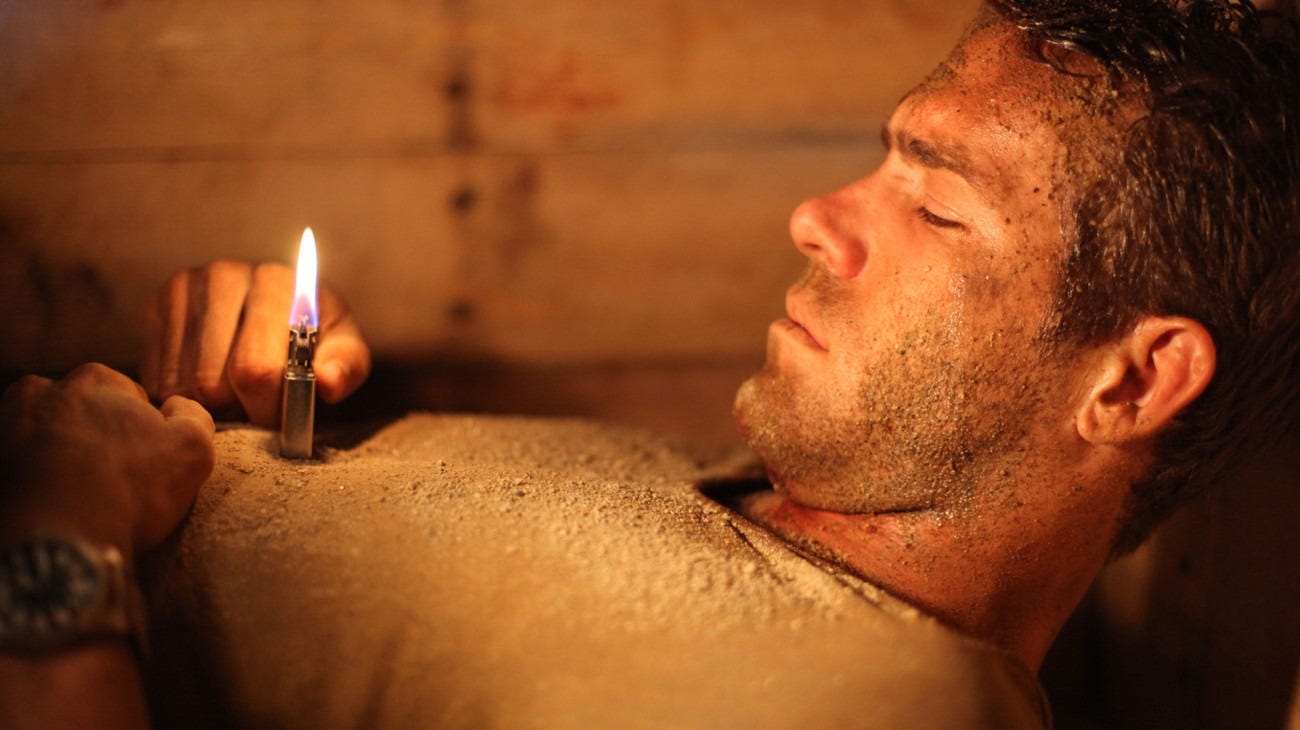
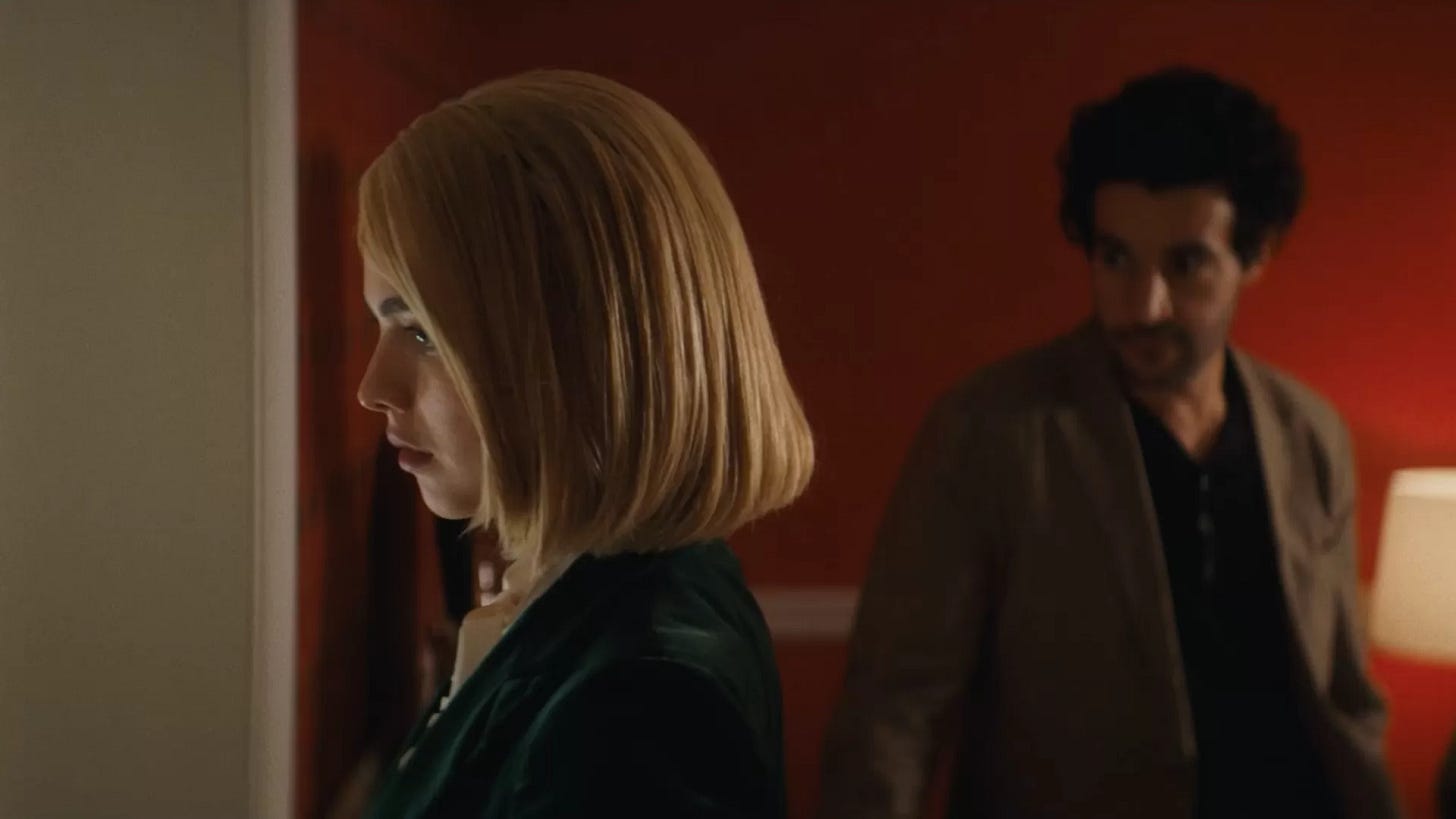

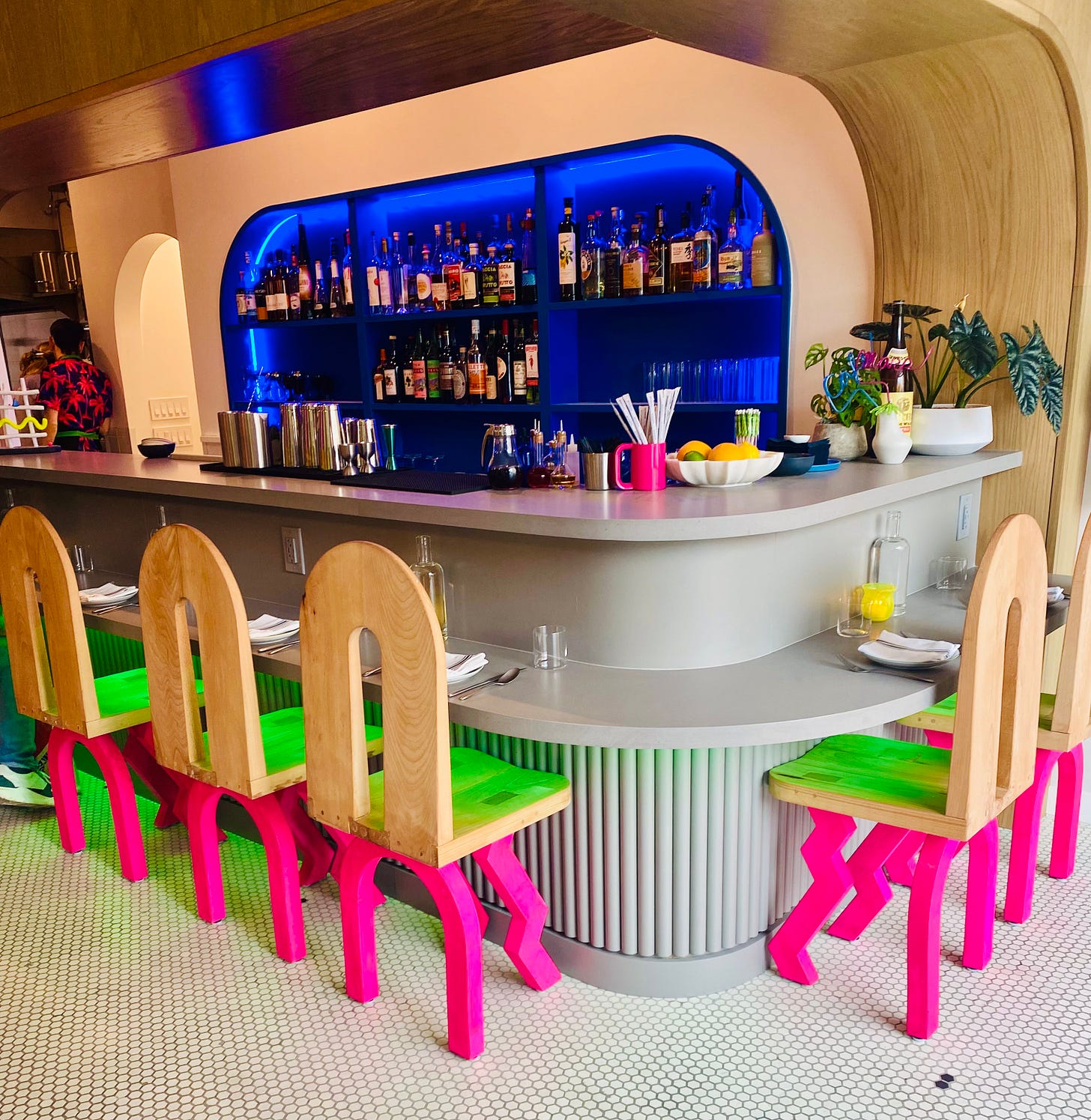
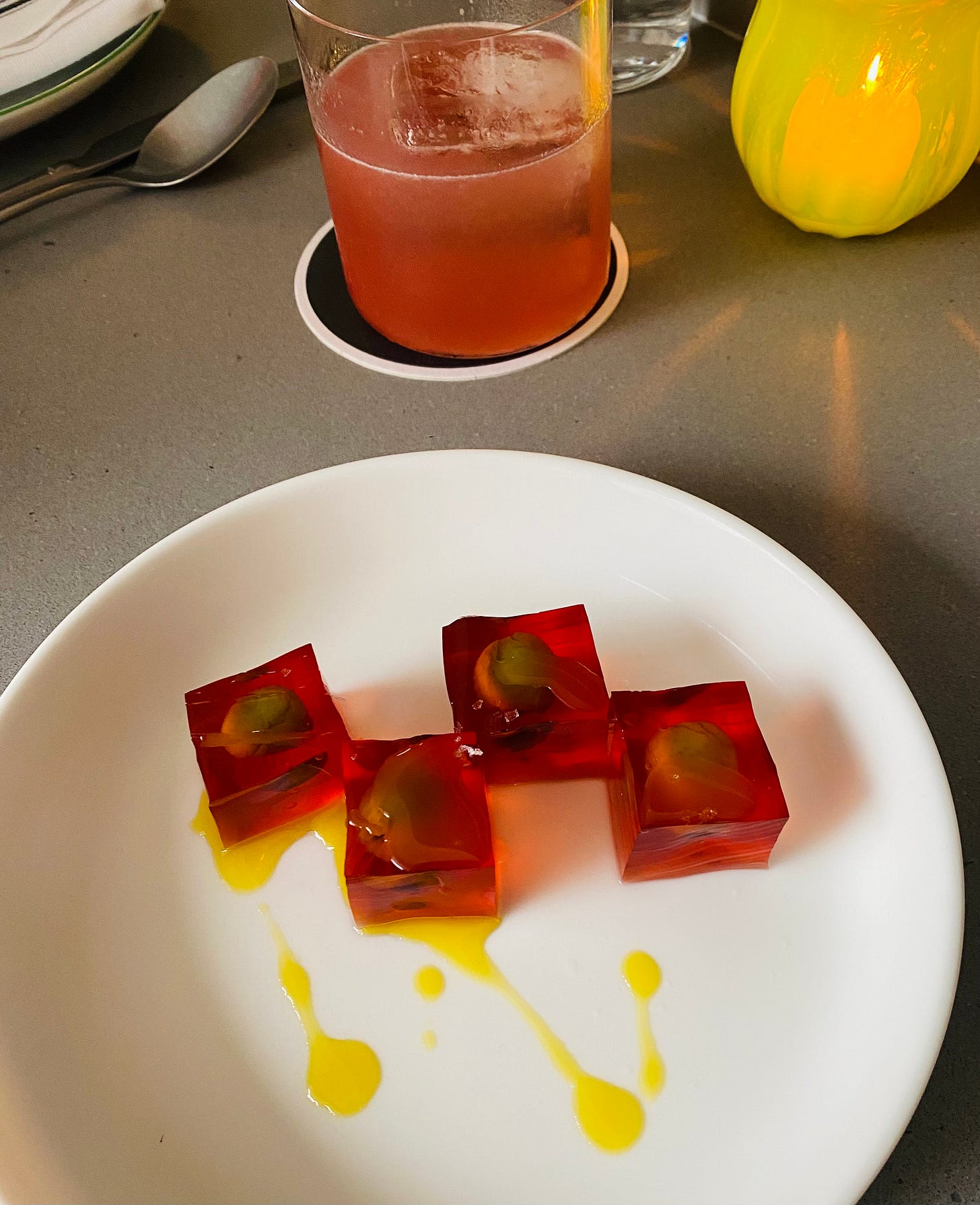
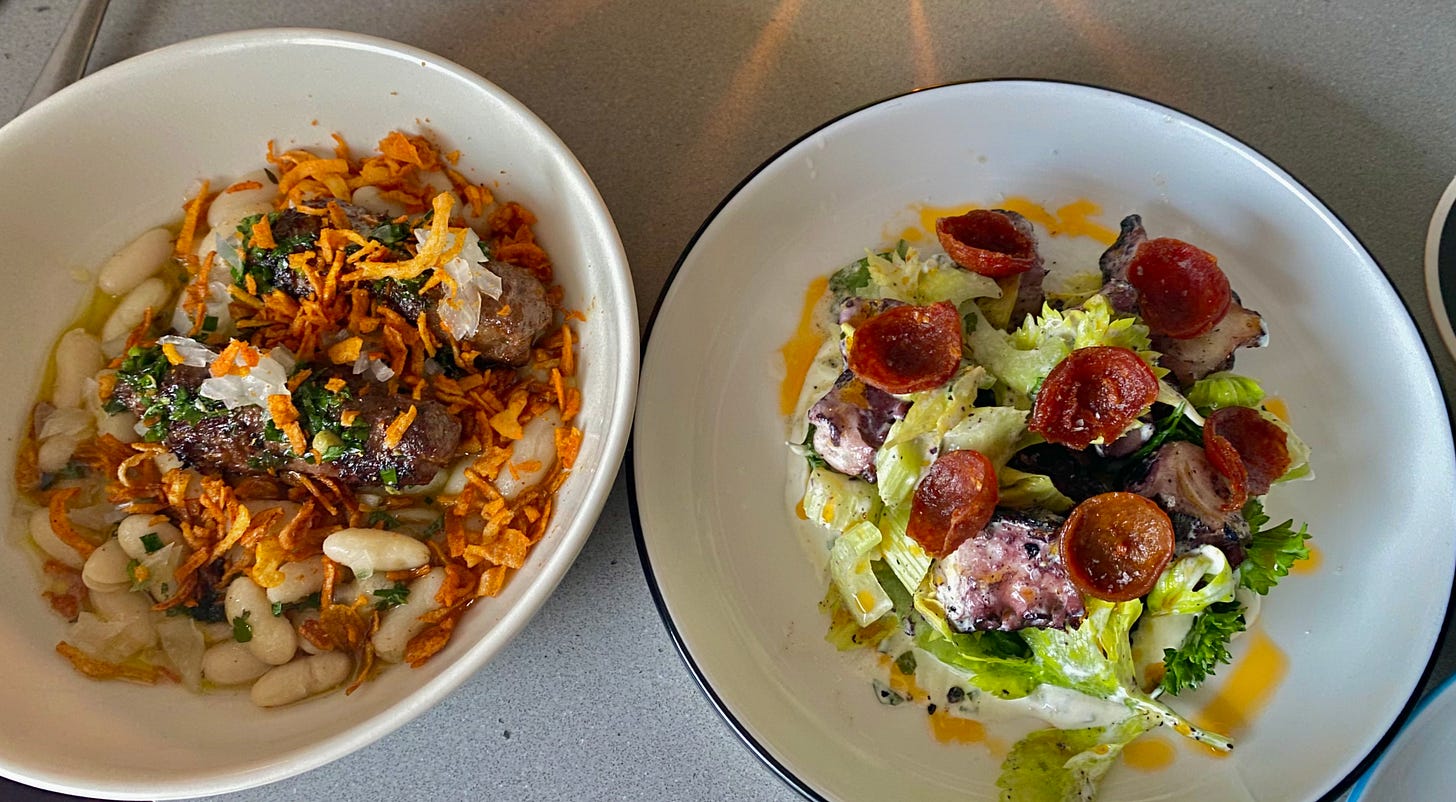
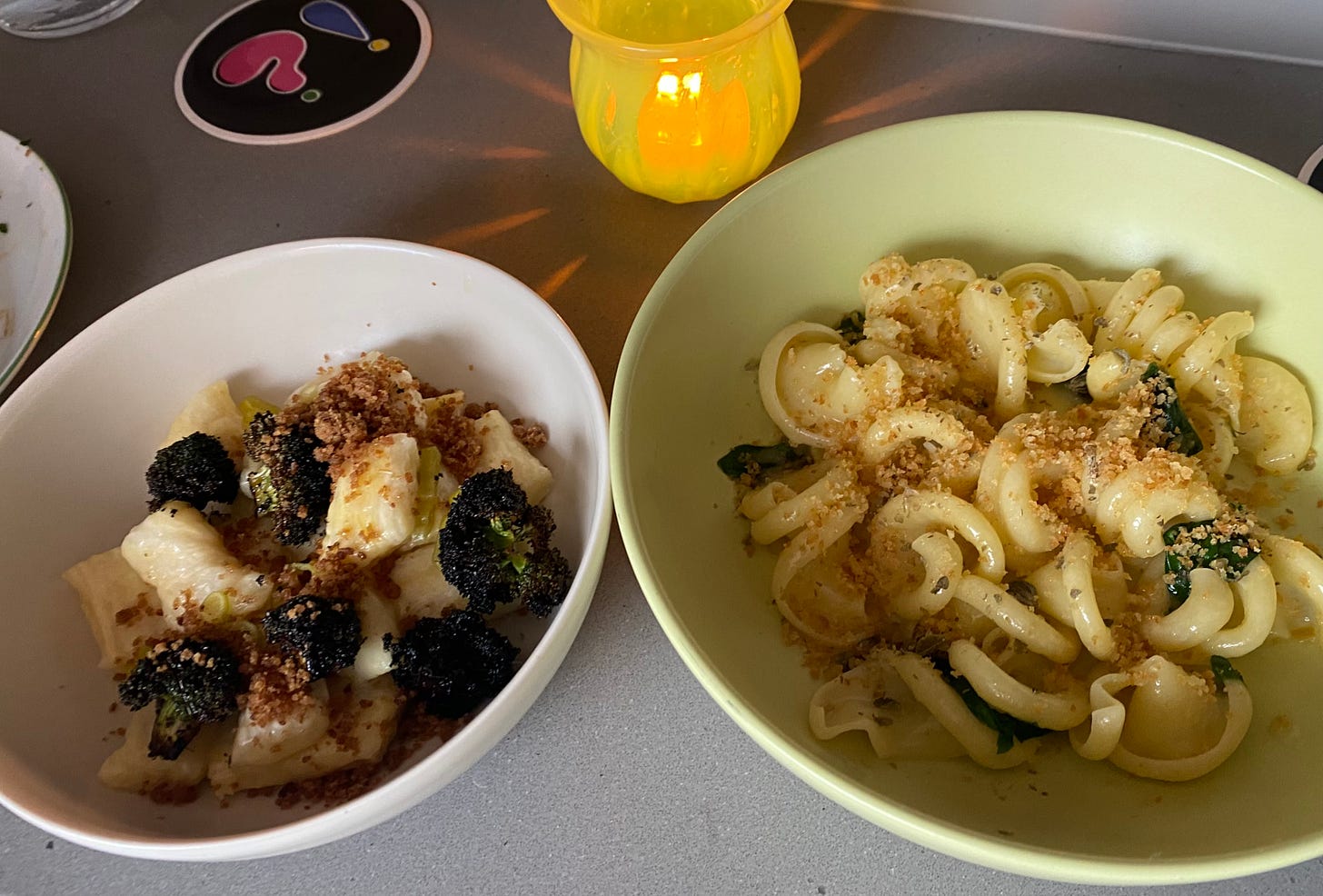
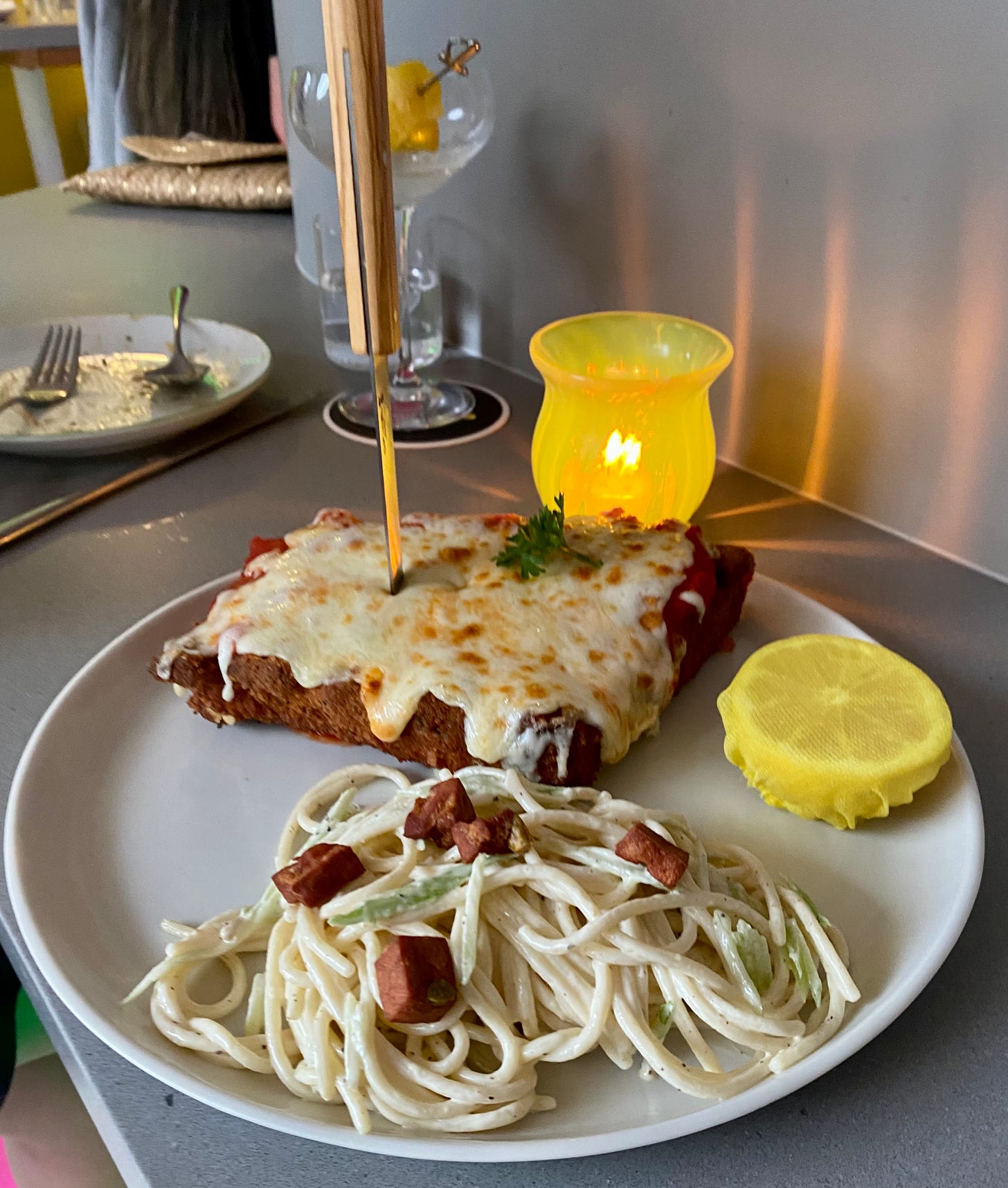

I recently had a cookie with luxardo cherries in it and was embarrassed I hadn’t thought of it sooner.
I’ve been bickering about the slide of Netflix into a basic cable channel for a while now. Have you seen any good pieces written about this? I’d love to ride the angsty nostalgia train with anyone.